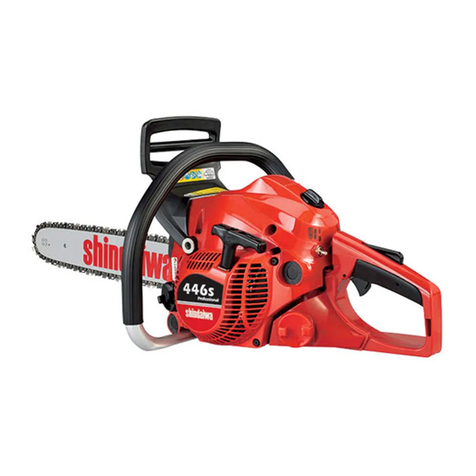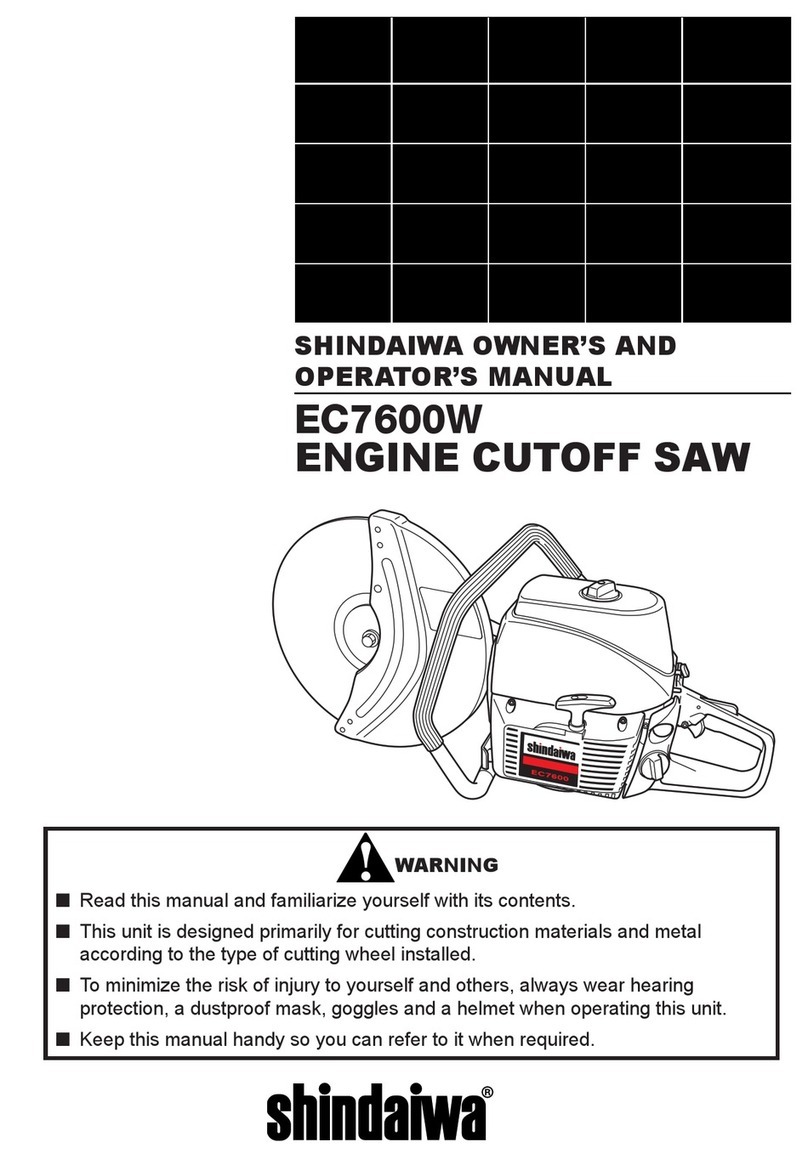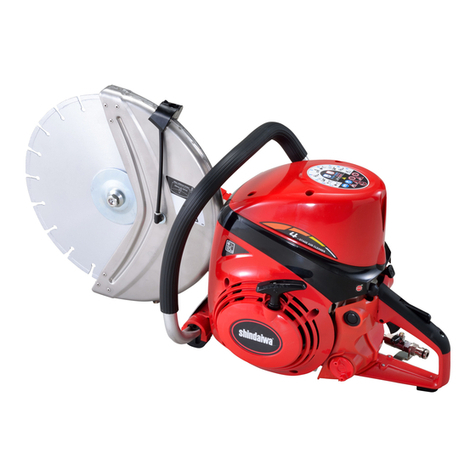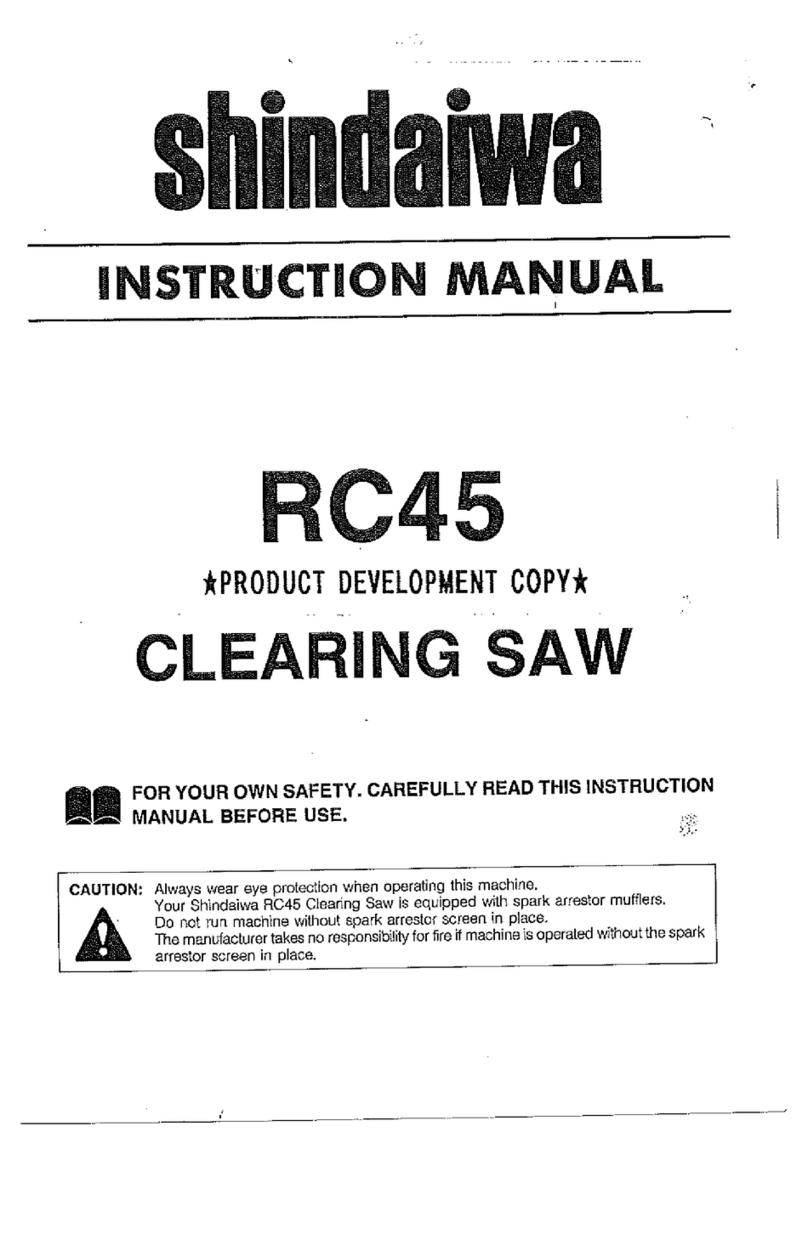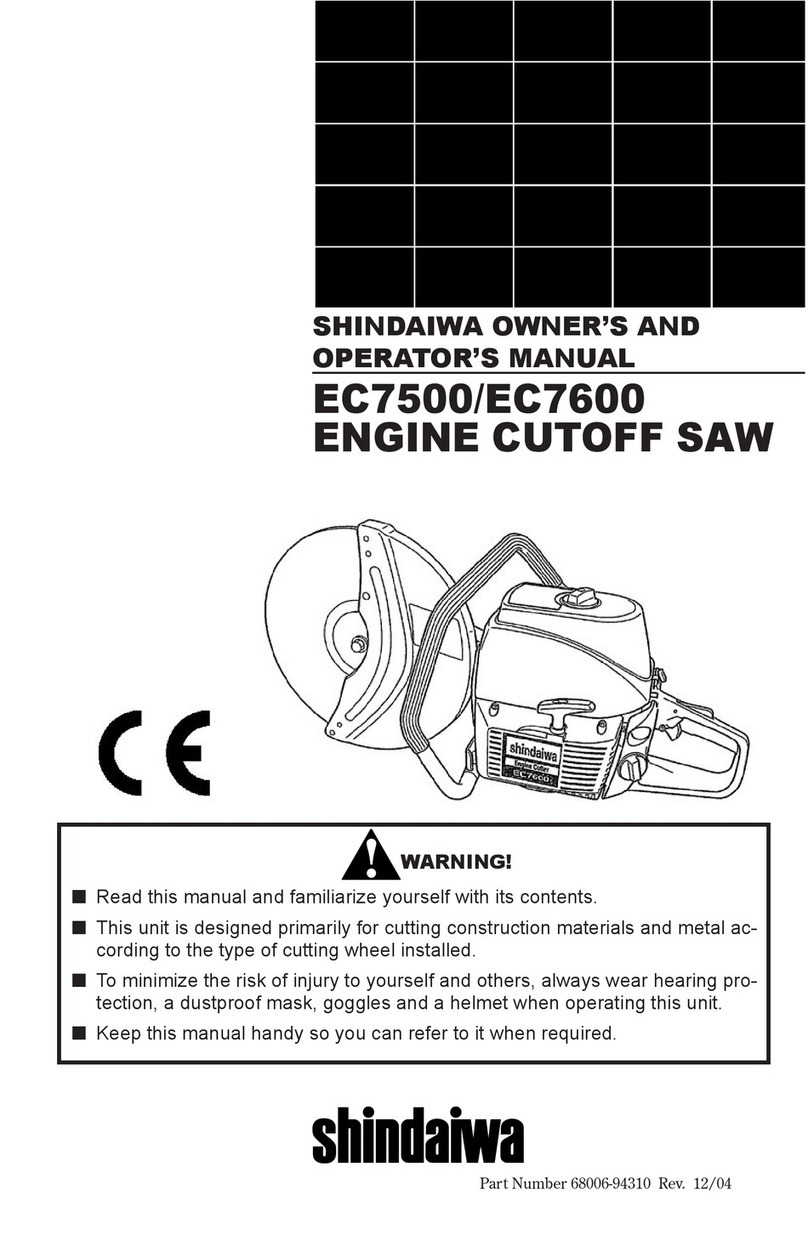4
WARNING!
nNever operate this chain saw with
one hand! One-handed operation
could cause you to lose control,
causing serious injury to yourself
or others! A chain saw is intended
for two-handed use.
nWear safety footwear, snug-fitting
clothing, protective gloves, and
eye, hearing, and head-protection
devices while working with this
chain saw.
nDo not allow other persons to be
near the chain saw when starting
or running the chain saw. Keep
bystanders and animals out of the
work area.
nNever allow young children or any
person unfamiliar with chain saws
to operate this saw!
nClear the work area before using
the saw. Never start cutting until
you are sure you have a secure
footing and have planned a retreat
path from the falling tree.
nWhen felling, keep at least 2 tree
lengths away from your fellow
workers.
nBefore starting the saw engine,
make sure nothing is touching the
saw chain.
nKeep all parts of your body away
from the saw chain whenever the
engine is running!
nStop the engine before carrying
the saw. Carry the saw with the
engine stopped, the guide bar and
saw chain pointing to the rear, and
the engine muffler away from your
body.
Additional Safety Precautions
nStop the engine before setting the
chain saw down.
nInstall the appropriate guide-bar
chain cover before transporting
the saw.
nNever operate this chain saw if you
are fatigued or if you are under the
influence of alcohol, drugs, or any
other substance that could affect
your ability or judgement.
nNever operate a saw that is
damaged, improperly adjusted,
or not completely and securely
assembled.
nDo not use this saw if the saw
chain continues to move after the
throttle control trigger is released.
nUse only Shindaiwa-recommended
parts when repairing or servicing
this saw.
nUse extra care when cutting a
limb that is under tension! A limb
under tension could spring back
suddenly, causing you to lose
control of the saw!
nUse extreme caution when cutting
smaller brush and saplings! Small-
diameter material may catch in the
chain and be whipped toward you
or pull you off balance, causing
you to lose control of the saw!
nOperate the saw only in a well
ventilated area. Be aware of carbon
monoxide poisoning. Exhaust
gases and lubrication oil mist can
cause serious injury or death.
nKeep the saw handles dry, clean
and free of oil or fuel mixture.
nNever operate any saw while
in a tree unless you have been
specifically trained to do so!
nNever perform service or repairs
to this saw unless you are
specifically trained and equipped
to do so!
nImproper maintenance, use of
nonconforming replacement
components, or the removal of
safety devices, such as the chain
brake or any of the chain brake
components, could result in
serious injury.
nNever allow any part of your
body near the clutch cover of an
operating saw.
nNever operate a saw with
damaged or missing anti-vibration
cushions. Long-term exposure to
vibration can damage your hands,
in particular vascular, bone or
joint, neurological or muscular
disorders. For lowest vibration,
replace damaged mounts
immediately. Mounts hardened
due to age or weathering should
also be replaced.
nAlways maintain a firm footing
while operating this saw! Ladders
and other temporary platforms
can shift unexpectedly, and are not
recommended!
nDo not operate this or any other
chain saw with the muffler
removed.
nAll chain saw service, other
than items listed in the owner’s
maintenance instructions,
should be performed by trained
Shindaiwa chain saw service
personnel.
nProlonged exposure to excessive
noise is fatiguing and could lead
to impaired hearing. The use of
proper ear protection can reduce
this potential hazard.
NOTE:
These safety precautions are intended
primarily for consumers or occasional
users. When using this chain saw for
logging purposes, refer to: CFR Section
1910. 226 (5); 2.5.1 of the American
National Safety Standard; Requirements
for Pulpwood Logging ANSI 03.1-1978;
and any applicable state safety codes.

